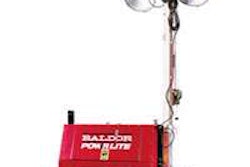Despite the high number of sub-standard bridges throughout the nation, bridge engineers remain optimistic they will be able to reduce number of deficient bridges
TUSCALOOSA, Ala., November 4, 2009—Although a shockingly high number of bridges in the United States remain sub-standard, highway and bridge engineers are optimistic about reducing the number of structurally deficient (SD) and functionally obsolete (FO) bridges. The information comes from an annual survey of highway professionals in 50 state Departments of Transportation and the District of Columbia conducted by Better Roads magazine. CONTECH Construction Products, Inc. sponsors a pullout map in Better Roads with a graphical look at current bridge conditions and the five-year trend in each state’s inventory of structurally deficient and functionally obsolete bridges.
Fourteen percent of all interstate and state bridges are considered functionally obsolete, and 6.8 percent are rated as structurally deficient, with a combined SD/FO total of 20.7 percent, the Better Roads study finds. Of all the nation’s city/county/township bridges, 10.7 percent are functionally obsolete, and 14.5 percent are structurally deficient, with a combined SD/FO total of 25.2 percent.
A total of 597,787 bridges were surveyed this year–383 more bridges than surveyed than in 2008. Of the 597,404 bridges surveyed in 2008, 144,942 were combined SD/FO. This year, there were 141,898 combined SD/FO bridges — 3,044 less than last year. However, although the number of deficient bridges may show that they have declined, many of the bridge engineers surveyed are quick to point out that this doesn’t take the actual square footage of SD/FO bridges into account.
The actual numbers may have declined, but the square footage may have increased, points out a highway program bridge manager with the Louisiana Department of Transportation in the Bridge Inventory.
The exclusive, proprietary study, which provides the most current data available on bridge conditions, finds that although bridge engineers still cite funding availability as one of the biggest challenges in lowering the number of states’ deficient bridges, the American Reinvestment and Recovery Act (ARRA) — better known as the stimulus — has provided some relief and has increased the level of funding for bridges.
Department of Transportation personnel surveyed say that this subsidy has enabled maintenance and reconstruction of some bridges that would otherwise not be possible, but the actual results range from having no effect or a minimal effect to a modest or significant impact. Officials from the Minnesota Department of Transportation Bridge Office — a state all too familiar with deficient bridges after experiencing the collapse of its I-35W Mississippi River Bridge in August 2007 — note that more than 50 bridges on Minnesota’s state and local highways have been advanced with ARRA funding.
However, bridge design engineers with the Hawaii Department of Transportation, say the stimulus funding “has assisted in funding a couple of bridge projects, but it hasn’t made a significant difference.”
John Latta, editor-in-chief of Better Roads, notes that this is deeply troubling. “Look no further for evidence that a disturbing number of America’s bridges now need care, repair or replacement,” Latta says. “This comprehensive survey makes it startlingly clear. Look at the responses of the state experts who are responsible for these bridges, and you become even more aware of just how much of a problem we face and must address urgently.”
Moreover, bridge engineers surveyed say there still isn’t enough emphasis on bridges and other infrastructure. Now that the surface transportation legislation (officially known as Safe, Accountable, Flexible and Efficient Transportation Equity Act … Efficient Transportation Equity Act: A Legacy for Users, or SAFETEA-LU) has expired — the five-year, $286.5 billion bill — expired on Sept. 30 — the nation is currently left without an infrastructure-funding plan. The transportation industry is calling for a half-trillion dollar funding plan, money that would include funding for highways and bridges.
Although Congress has begun discussions about the reauthorization of the legislation and a temporary extension of the plan was passed, there hasn’t been any action yet to sign a new bill into law.
This exacerbates the nation’s crisis with structurally deficient and functionally obsolete bridges. Although the stimulus has provided a boost to some state, county and municipal DOTs, lack of sufficient funding to not only maintain but improve structurally deficient and functionally obsolete bridges remains the perennial problem, says Tina Grady Barbaccia, executive editor of Better Roads. “Compounding the funding problem is lack of adequate training and retention and sufficient time to complete projects,” Barbaccia says. “It’s no secret that the construction industry faces a shortage of qualified workers, and it carriers over into bridge repair and inspection.”
What’s more, Barbaccia points out, “Limitations on construction dates and bureaucratic red tape — including environmental restrictions — can delay or even stop projects.”
The Better Roads Bridge Inventory provides further insight into the decaying bridge inventory by breaking out structurally deficient bridges from those that are functionally obsolete. Structurally deficient bridges are considered more serious, since they have structural problems that require limiting weight or more frequent inspections. Some must be closed. Functionally obsolete bridges may be in good condition, but don’t meet the needs of current traffic such as with clearance and capacity. Responding agencies use a standard sufficiency rating system developed by the Federal Highway Administration, to rate each bridge. Federal law mandates that all bridges must be inspected every two years.
The Worst
Texas leads the nation with the most combined structurally deficient and functionally obsolete bridges (9,564 or 19 percent). Pennsylvania is second with 9,130 (39 percent), followed by Missouri (7,103 or 29 percent), Ohio (6,993, or 23 percent), and Oklahoma (6,904 or 29 percent). The District of Columbia leads the nation with the highest percentage of combined structurally deficient and functionally obsolete bridges at 55 percent.
The Best
States with the lowest percentage of structurally deficient/functionally obsolete bridges include: Arizona (11 percent); Nevada (11 percent); Minnesota (13 percent); Colorado (14 percent); Wisconsin (14 percent); and Wyoming (14 percent).
A Five-Year Look at America’s Bridge Inventory
|
Type of Bridge |
2005 |
2006 |
2007 |
2008 |
2009 |
|
Interstate and state bridges |
|
|
|
|
|
|
Total surveyed |
287,197 |
285,942 |
287,431 |
288,511 |
288,920 |
SD/FO |
63,574 |
62,517 |
62,855 |
63,910 |
62,504 |
|
City, county, township bridges |
|
|
|
|
|
|
Total surveyed |
308,428 |
309,247 |
310,384 |
308,893 |
308,867 |
SD/FO |
85,552 |
83,479 |
81,459 |
81,032 |
79,394 |
|
Total overall bridges surveyed |
|
|
|
|
|
Total |
595,625 |
595,189 |
597,185 |
597,404 |
597,787 |
|
*SD/FO |
149,126 |
145,996 |
144,314 |
144,942 |
141,898 |
|
Note: There were 383 more bridges in the national inventory this year |
|
|
|
|
|
*SD/FO = structurally deficient, functionally obsolete Source: Better Roads 2009 Bridge Inventory Survey
About the study
The Better Roads Bridge Inventory is an exclusive, award-winning, annual survey that has been conducted since 1979. Bridge engineers from every state and Washington, D.C., are sent a survey with both qualitative and quantitative questions. The Federal Highway Administration (FHWA), in consultation with the states, has assigned a sufficiency rating, or SR, to each bridge (20 feet or more) that is inventoried. Formula SR rating factors are outlined in the current Recording and Coding Guide for Structure Inventory and Appraisal SI&A of the Nation’s Bridges. The qualitative data are gathered through a questionnaire about major issues concerning bridge conditions and maintenance.
For more information
The complete bridge inventory appears in the November 2009 print issue of Better Roads and at www.BetterRoads.com.
For a summary of bridge conditions in your state go to www.betterroads.com/better-bridges-bridge-inventory-2009-state-of-bridges/.
For a state-by-state breakdown of structurally deficient and functionally obsolete bridges, go the Better Roads Digital Edition at http://www.digitalmagazinetechnology.com/a/?KEY=betterroads-09-11november#page=9.
Better Roads (www.betterroads.com) is the authoritative source for information on the construction and maintenance of highways and bridges, serving 38,000 highway and bridge professionals within government, contracting, and engineering firms. Better Roads is published by Randall-Reilly Publishing Co. Founded in 1934, Randall-Reilly Publishing Company(www.randallpub.com) is the premier U.S. media and information company focused on the trucking, construction and industrial markets.
CONTECH Construction Products, Inc. is the provider of modular, prefabricated bridges for a variety of applications and capacities. More than 65,000 CONTECH bridges have been installed worldwide.












